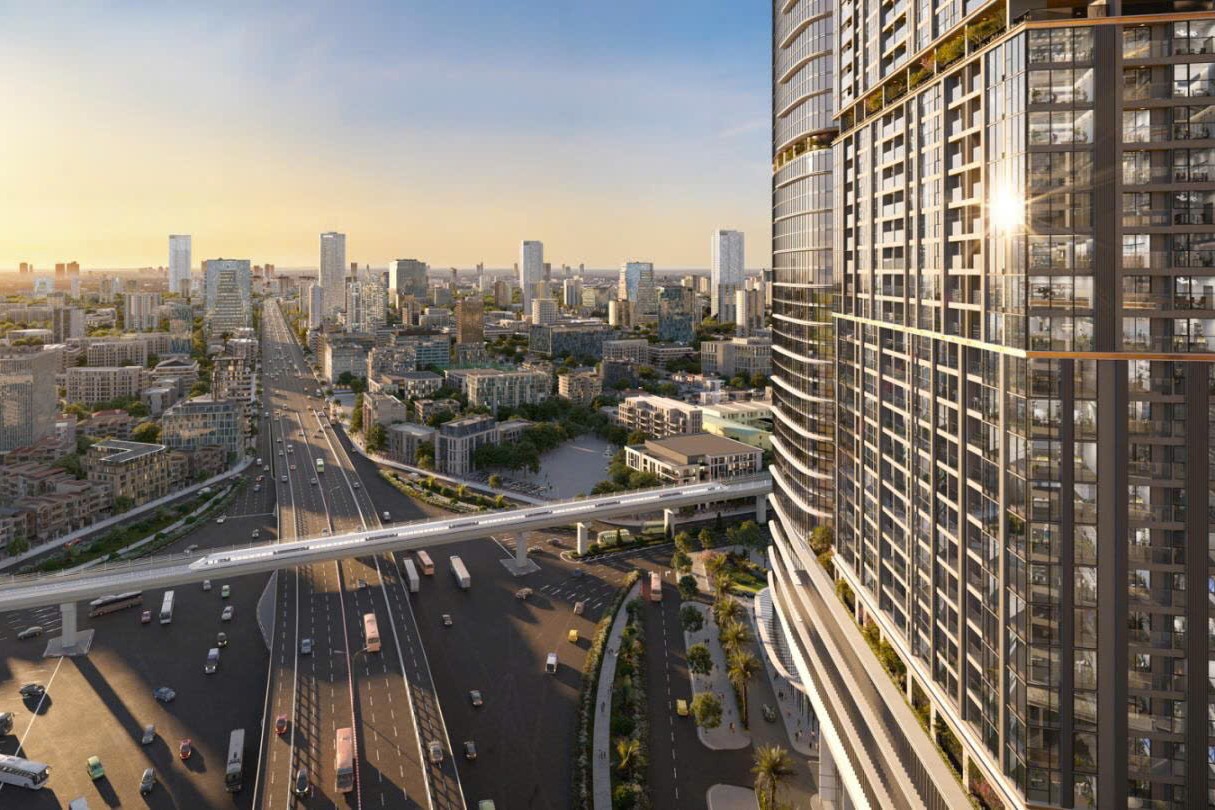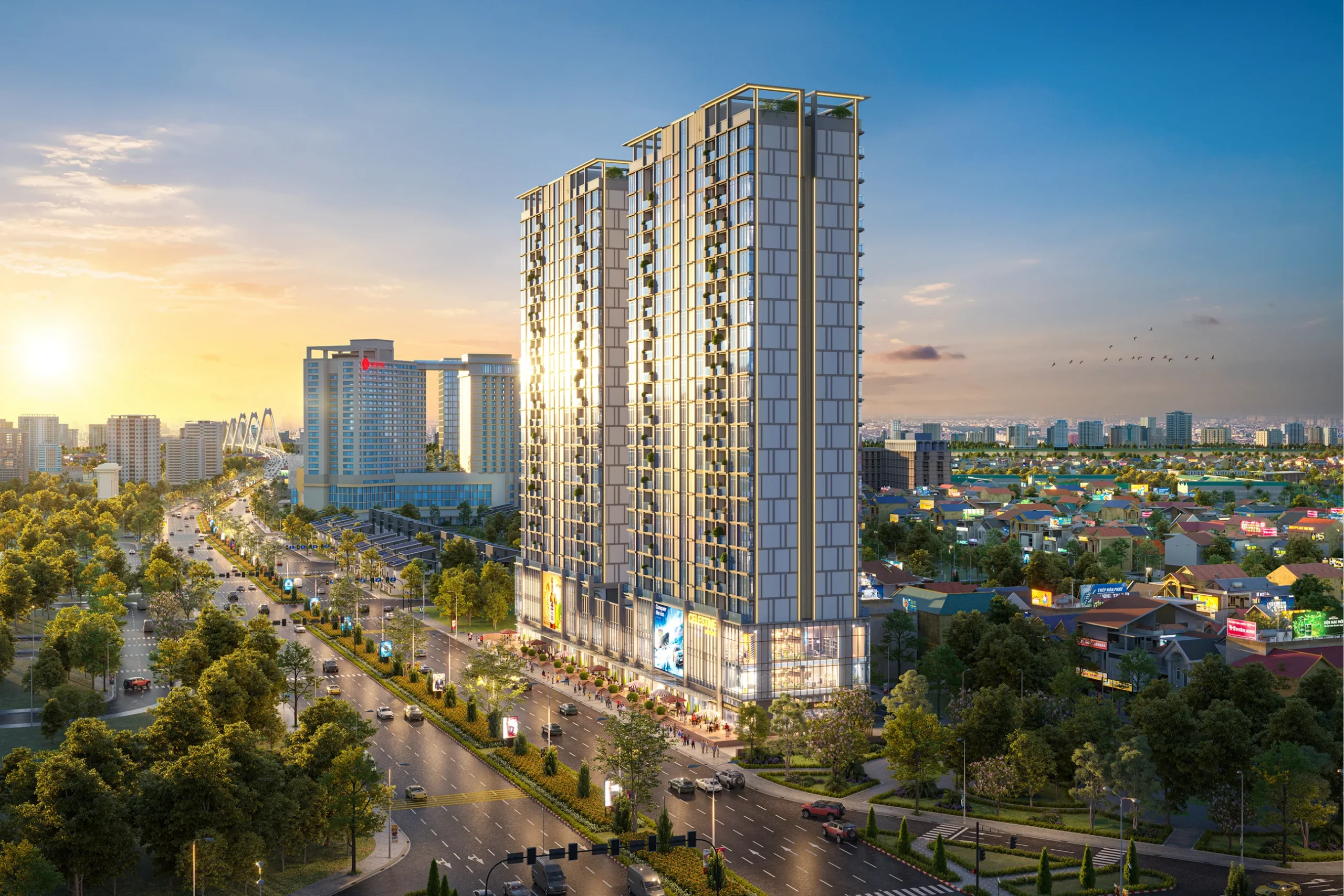After a long period of relying heavily on supply from Vinhomes, Hanoi’s real estate market is now witnessing the return of developers such as Sun Group, Tân Hoàng Minh, Taseco, and Tân Á Đại Thành. This marks a significant shift in the supply structure, opening a new chapter of growth for the capital’s property market.
The supply shortage and the “Vinhomes-ization” trend
From 2021 to 2024, Hanoi’s real estate market faced a severe shortage of supply, mainly due to legal bottlenecks. This situation inadvertently elevated the role of Vinhomes (a member of Vingroup), Vietnam’s number one property developer, as the company holds an exceptionally large reserve of “clean” land.
Evidence of this dominance can be seen in recent years, with Vinhomes capturing the market through large-scale projects such as Vinhomes Ocean Park and Vinhomes Smart City. Supply from other developers—such as Masterise Group, MIK Group, and even foreign players like CapitaLand—also came from land plots within Vinhomes’ major projects.
Of course, the market still saw some supply from other developers such as Hoàng Thành (Hoàng Thành Pearl), Hiền Đức (Heritage Westlake), Phenikaa (Endless Skyline Westlake), and Taseco (Han Jardin), VINAENCO (Celestine Westlake), Daewoo (Starlake Phase 2). However, their scale was minimal compared to the “giant” Vinhomes, not to mention the fact that these projects appeared sporadically over the years.

A Policy-Driven Turning Point: “De-Vinhomes-izing” the Market
From early 2025 onwards, Hanoi’s real estate market has undergone notable changes. While Vinhomes has maintained its dominant position by continuously launching “mega” projects such as Vinhomes Global Gate (Đông Anh) and Vinhomes Wonder City (Đan Phượng), the market has also seen a steady influx of significant new supply from other developers.
Notable names include: Sun Group with Sun Feliza Suites, Tân Hoàng Minh with Greenera Southmark, Tân Á Đại Thành with Galia Hanoi, Taseco with Long Biên Central, FLC with Hausman Premium Residences at FLC Premier Parc, DAC Hanoi with the Southwest Mễ Trì Residential Cluster, and CapitaLand with The Fullton. In addition, there is a series of social housing projects such as Viglacera’s Thăng Long Green City (Đông Anh), UDIC’s Eco Tower N01 Hạ Đình (Thanh Trì), and Him Lam’s Rice City Long Châu (Long Biên). It can be said that since 2022, Hanoi has not experienced such a simultaneous arrival of so many new projects until now.

The entry of new developers has marked a strong transformation, expanding choices for buyers and creating a more diverse market landscape. This shift also reflects the city’s efforts to improve legal procedures.
Phạm Đức Toản, General Director of EZ Real Estate Investment and Development JSC, remarked:
“Previously, real estate supply in Hanoi mainly came from large-scale mega-urban projects developed by a handful of major players, which meant that market prices were largely dictated by these few developers. Recently, however, the city has accelerated the resolution of legal issues for hundreds of projects, many of which have now restarted and are returning to the market.”
Đỗ Thu Hằng, Senior Director of Research & Consultancy at Savills Hanoi, commented:
“The expansion of supply from new developers will increase market competition and provide greater variety for consumers.”
Ms. Hằng emphasized that the market is gradually reshaping into a new landscape, where the reputation and capability of the developer play a pivotal role. Buyers today are more cautious and discerning. Their product choices are based not only on location and price, but also on construction quality, transparent legal status, brand credibility, and the developer’s long-term commitment.
“End-users are typically those who have saved up through years of work, so they particularly value the real worth of the property and the living environment. Developers with proven experience in delivering quality projects on schedule will have a clear advantage in the market.”
According to Savills’ report, in 2025, Hanoi will see approximately 31,000 new apartments launched for sale—exceeding the 26,400 units recorded in 2024—reflecting a boom in supply. The removal of legal bottlenecks, especially for projects being restarted, has contributed significantly to this surge in supply.
Housing Prices Still Unlikely to Fall
Although supply is increasing, according to Phạm Đức Toản, apartment prices may still rise—especially from major developers such as Vinhomes or Sun Group. “Rising supply will create price competition, but prices could remain high, particularly in prime locations. Moreover, input costs are continuously increasing, especially land-use fees and construction costs,” he said.
Mr. Toản pointed out that land-use fees in Hanoi are currently substantial. For mid-sized condominium projects, the fee can reach 500–700 billion VND, making it financially challenging for many developers to deliver low-priced products. In addition, construction costs have been climbing due to sharp increases in both material and labor costs. All these factors make it unlikely for new apartment prices to be significantly lower, let alone experience deep price cuts.
“While social housing projects are improving thanks to government support policies, the commercial housing segment still faces cost factors that cannot be changed overnight. With input costs remaining high—particularly land and construction—housing prices in Hanoi are unlikely to fall sharply despite the increase in supply,” Mr. Toản added.
The CEO of EZ Property also noted that among the nearly 300 projects cleared by Hanoi under Resolution 171, only about one-third are expected to be implemented in the short term. The remainder still face challenges such as site clearance, unsettled land-use rights, or fragmented ownership. Another key concern is the financial capacity of developers. “Many companies are burdened with bad debts, with mortgaged assets exceeding the value of their land plots, and no cash flow to proceed. This could lead to projects being transferred or becoming ‘prey’ in M&A deals,” Mr. Toản warned.
Pressure from a More Diverse Developer Landscape
From another perspective, Nguyễn Anh Quê, Chairman of G6 Group, said that between 2025 and 2030, in addition to the 298 projects with legal issues resolved, Hanoi is also preparing to launch 200 social housing projects under a separate National Assembly resolution on social housing development. This expansion is expected to ease supply shortages and increase options for buyers.
Mr. Quê observed: “With a large number of projects coming to market, Hanoi is heading toward a boom in supply. This will help address the housing shortage and improve homeownership opportunities, especially for middle- and low-income groups.”
According to Mr. Quê, while the sharp increase in supply will “quench the market’s thirst,” it may also put pressure on prices to adjust. “The surge in supply is expected to intensify competition among developers, which could affect selling prices. However, prices may still remain high, especially in key areas and large-scale projects,” he noted.
Mr. Quê believes that any price adjustments will not be uniform but will vary significantly by location and property type. He explained that, in the context of e-commerce growth, changing consumer behavior, and persistent macroeconomic challenges, certain real estate segments will face stronger downward price pressure.
Specifically, with reduced demand for retail leasing, street-front houses could see price drops of 20%–30%, while inner-city houses for residential use or rental are expected to fall by about 15%–20%. For condominiums, adjustments will also differ by area: from Ring Road 1 to Ring Road 3, prices may fall by 10%–20%, while in areas from Ring Road 3 to Ring Road 4, declines could reach around 30%.